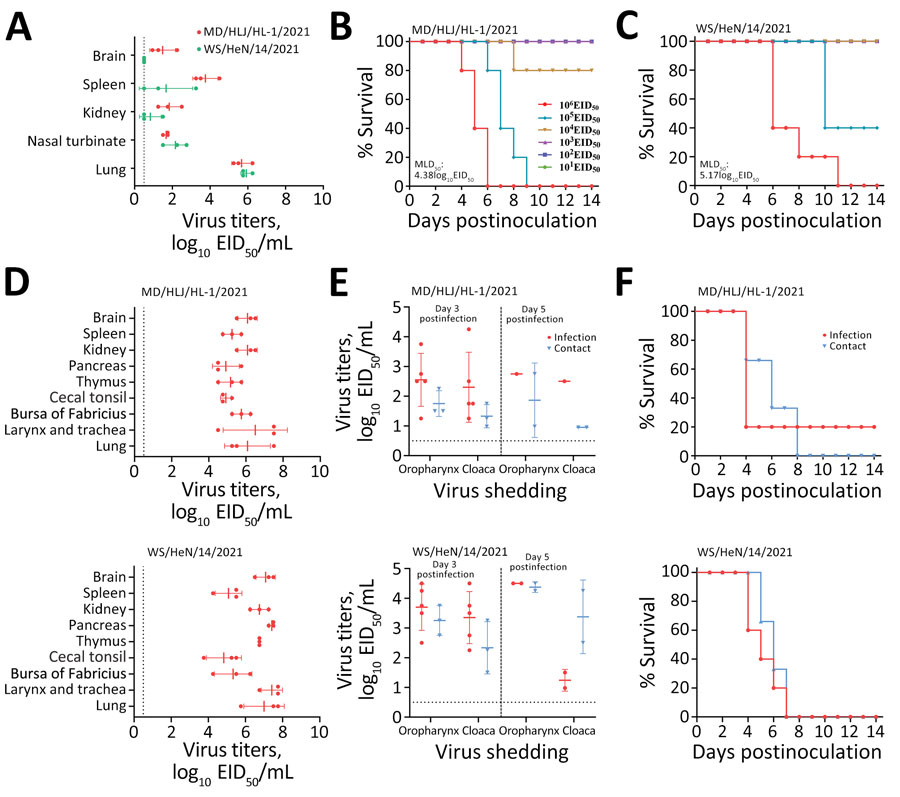Volume 29, Number 7—July 2023
Research
Highly Pathogenic Avian Influenza Virus (H5N1) Clade 2.3.4.4b Introduced by Wild Birds, China, 2021
Figure 2

Figure 2. Replication and virulence of representative highly pathogenic avian influenza virus (H5N1) viruses in mice and ducks. A) Virus titers in organs of mice that were humanely killed on postinfection day 3 with 106 EID50 of the test viruses. B, C) MLD50 of the indicated viruses. D) Virus titers in organs of ducks that were killed on day 3 post inoculation with 106 EID50 in 0.1 mL of the indicated viruses. E) Virus shedding from ducks on the indicated days after inoculation. F) Death pattern of ducks in the infected and control groups. EID50, 50% egg infectious dose; MLD50, 50% lethal dose for mice.
1These authors contributed equally to this article.
Page created: May 21, 2023
Page updated: June 20, 2023
Page reviewed: June 20, 2023
The conclusions, findings, and opinions expressed by authors contributing to this journal do not necessarily reflect the official position of the U.S. Department of Health and Human Services, the Public Health Service, the Centers for Disease Control and Prevention, or the authors' affiliated institutions. Use of trade names is for identification only and does not imply endorsement by any of the groups named above.